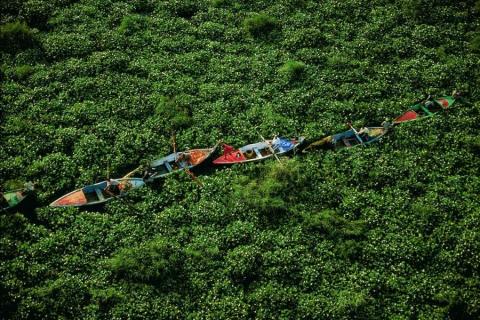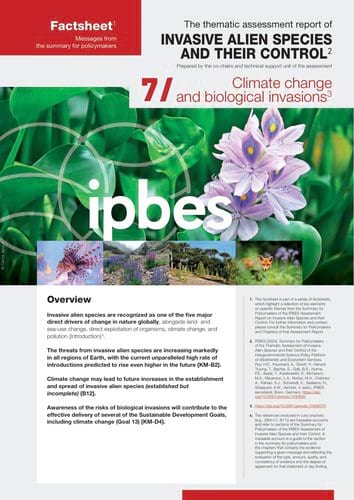Factsheets on invasive alien species now available

Last updated 12 February 2024.
A set of factsheets for the Invasive alien species assessment (Thematic Assessment of Invasive Alien Species and their Control) is now available.
These documents were prepared by the co-chairs and technical support unit of the assessment. They summarise key messages from the assessment's summary for policy makers: summaries of the summary for a quick overview.
As an ONet member, you might be especially interested in factsheet 6 on biological invasions and stakeholder engagement.
>> Factsheet 1 - Invasive alien species: data on trends and impacts
>> Factsheet 2 - The role of businesses in the management and governance of biological invasions
>> Factsheet 3 - Invasive alien species affect protected areas and most natural ecosystems
>> Factsheet 4 - Biological invasions on islands
>> Factsheet 5 - Invasive alien species management and governance
>> Factsheet 6 - Biological invasions and stakeholder engagement
>> Factsheet 7 - Climate change and biological invasions
For an overview of IPBES publications, materials, and projects on invasive alien species, see our dedicated page.

Header photo by Yann Arthus-Bertrand, 1993: Jacinthes d’eau sur le Nil, Egypte (Water Hyacinths on the Nile, Egypt). The Water Hyacinth (Pontederia crassipes, formerly Eichhornia crassipes) is the most widespread invasive alien species worldwide. Infestations of these plants can block waterways, boat traffic, and swimming; they can also destroy and pollute aquatic ecosystems.







